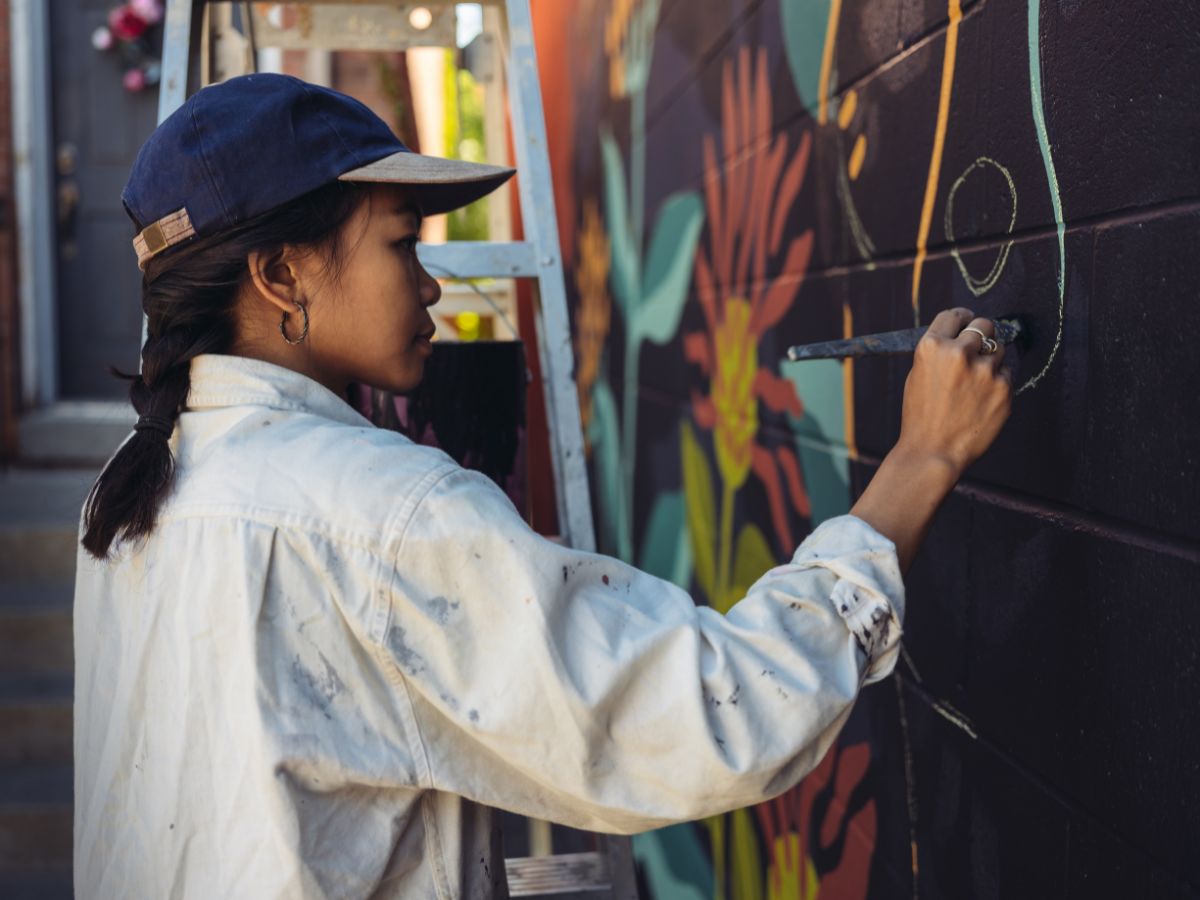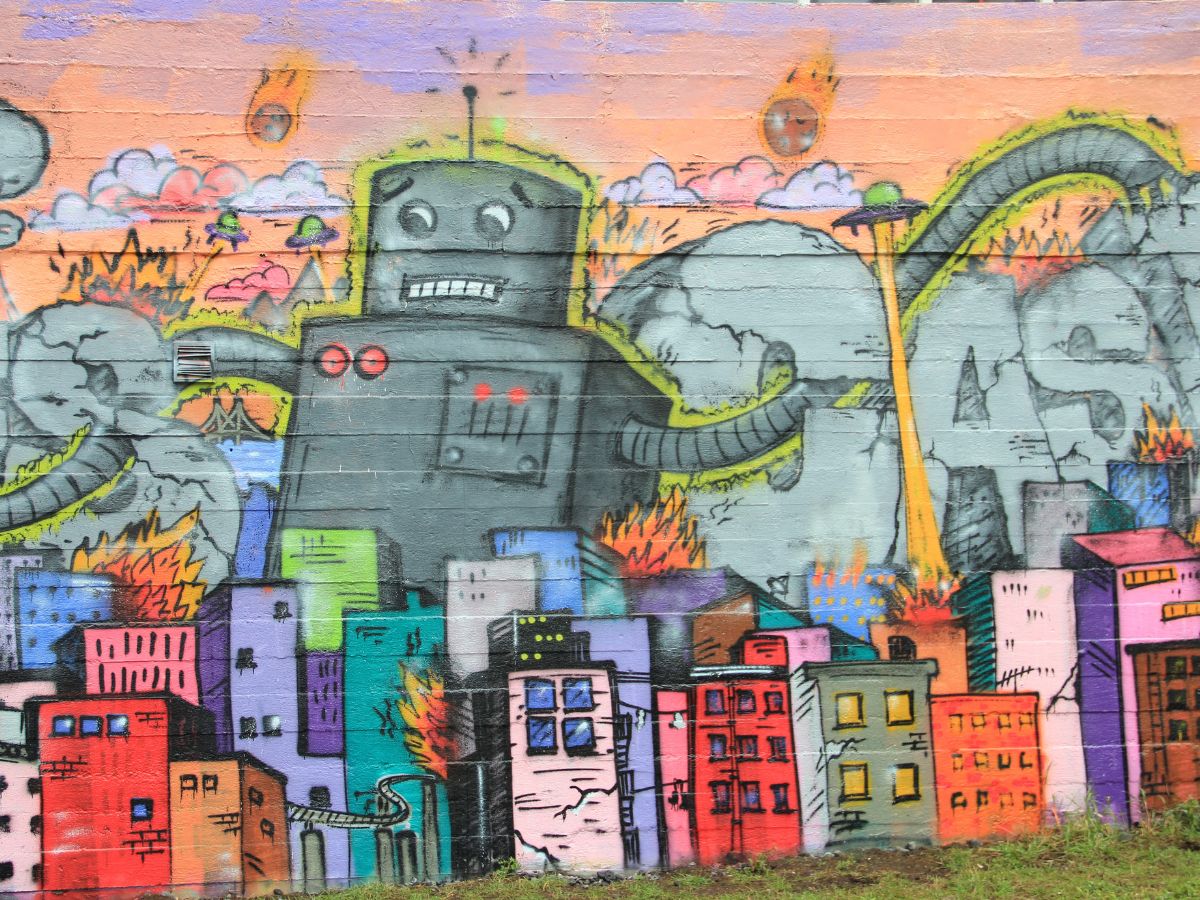
What is Public Mural Art?
Public mural art is an artistic expression that uses large-scale paintings or designs on walls or other permanent surfaces in outdoor or indoor public spaces. These murals are often community-driven, celebrating local culture, history, or values, and have been embraced as a tool for social engagement and beautification.
Historically, public murals gained popularity during the Great Depression in the United States, particularly through the Works Progress Administration (WPA). The WPA commissioned thousands of murals across the country, designed to depict American life and culture, bringing art to the masses. This tradition continues today with projects like Mural Arts Philadelphia and Cincinnati’s ArtWorks, which involve community collaboration and aim to reflect the identity and values of the neighborhoods they serve.
One of the defining characteristics of public mural art is its ability to engage communities. In many cases, local artists collaborate with residents to design and paint murals that capture the spirit and diversity of the area.
“Murals build a sense of community,” said muralist Grace McCammond in an interview with St. Louis Public Radio. “They make it welcoming and walkable and they make you want to go there.”

For example, Mural Arts Philadelphia has worked on projects that address themes such as mental health and social justice, using art as a means of both reflection and healing. In a project that addressed suicide awareness in Philadelphia, over 1,200 community members participated, turning the mural into a symbol of collective support.
Public murals not only beautify urban landscapes but also have economic and social benefits. Research indicates that murals can increase tourism and foot traffic, enhance neighborhood pride, and even reduce crime in certain areas.
In Cincinnati, ArtWorks has completed over 90 murals since 1996, often involving local teens in the process. This not only beautifies the city but also teaches valuable professional skills like teamwork and financial literacy.